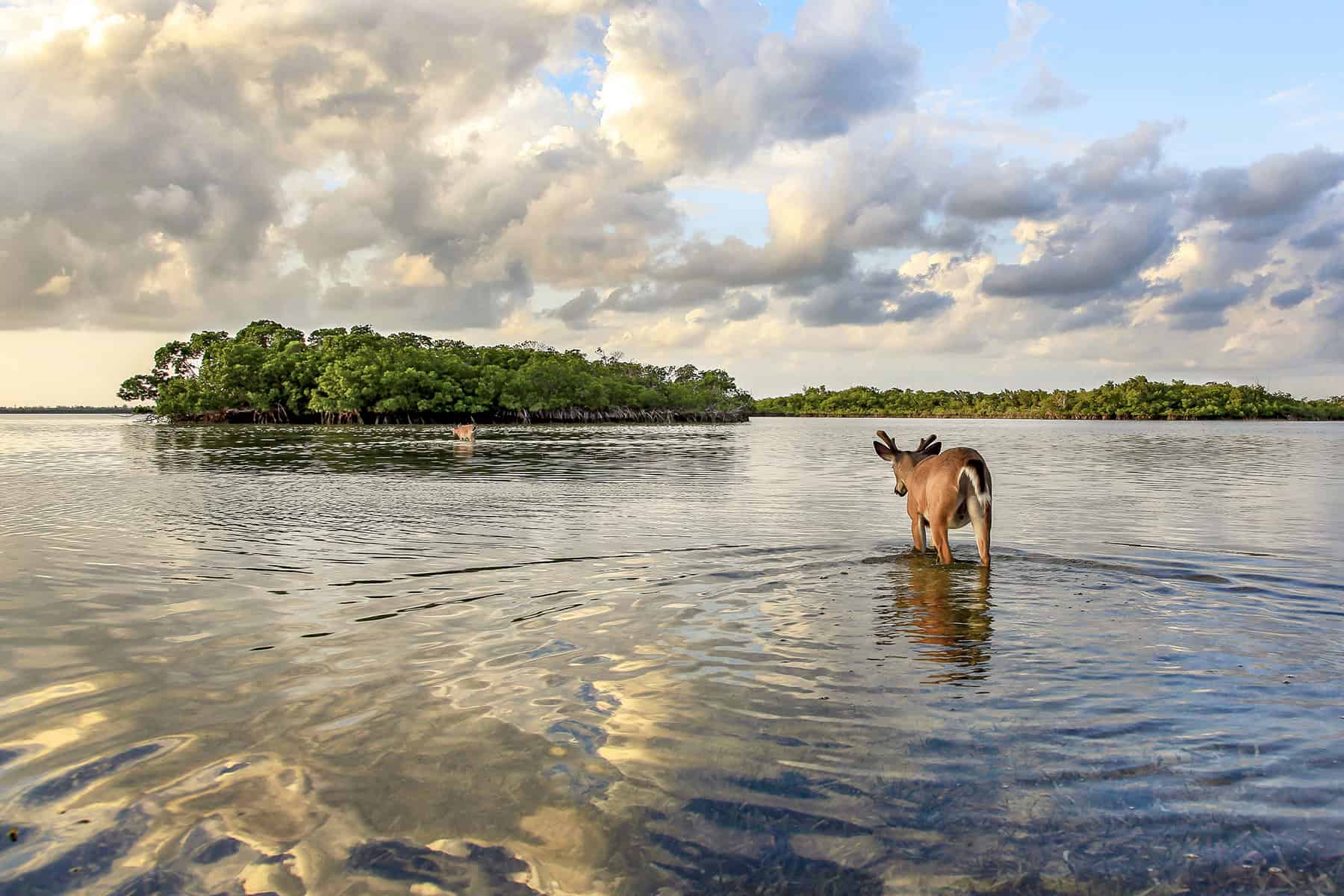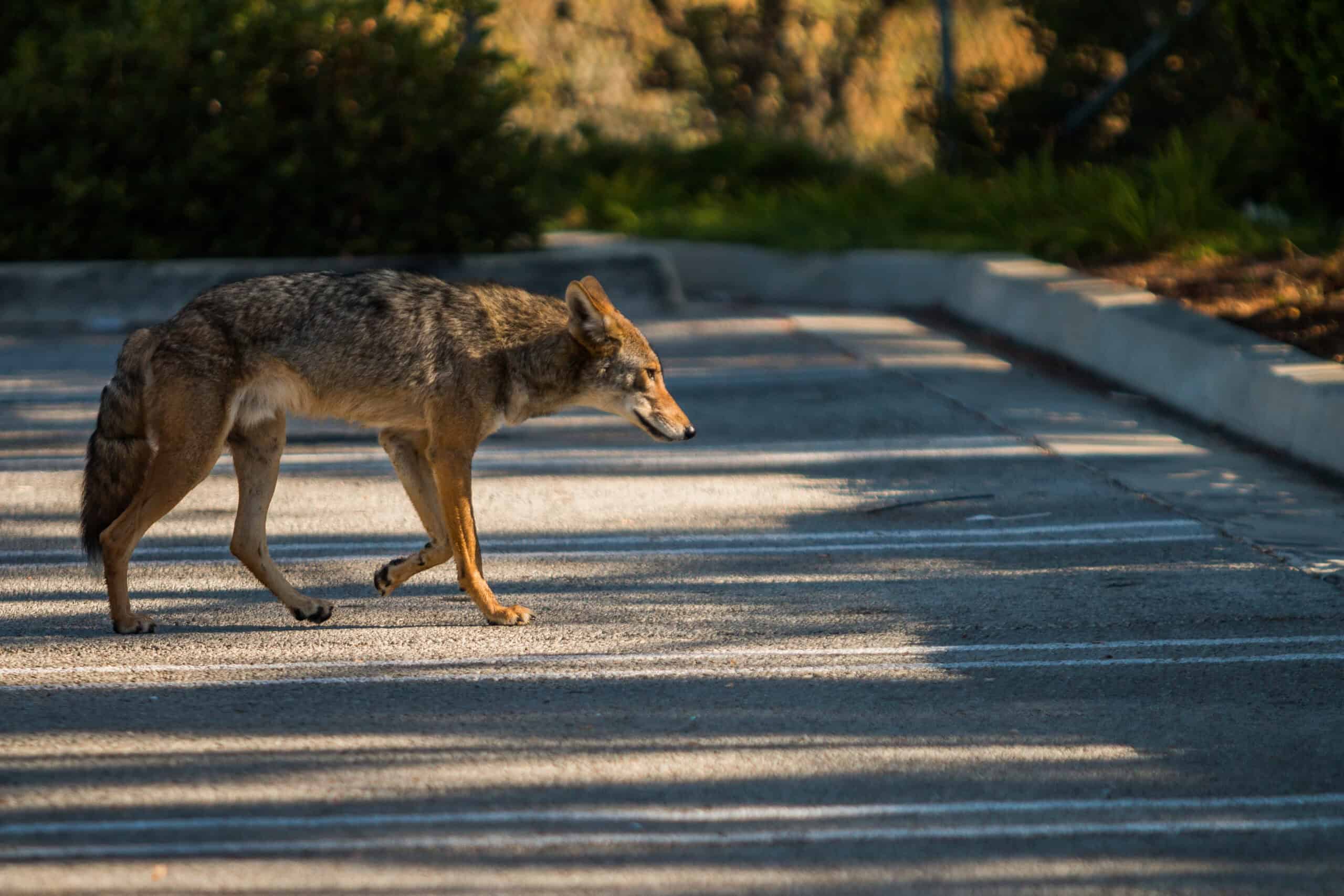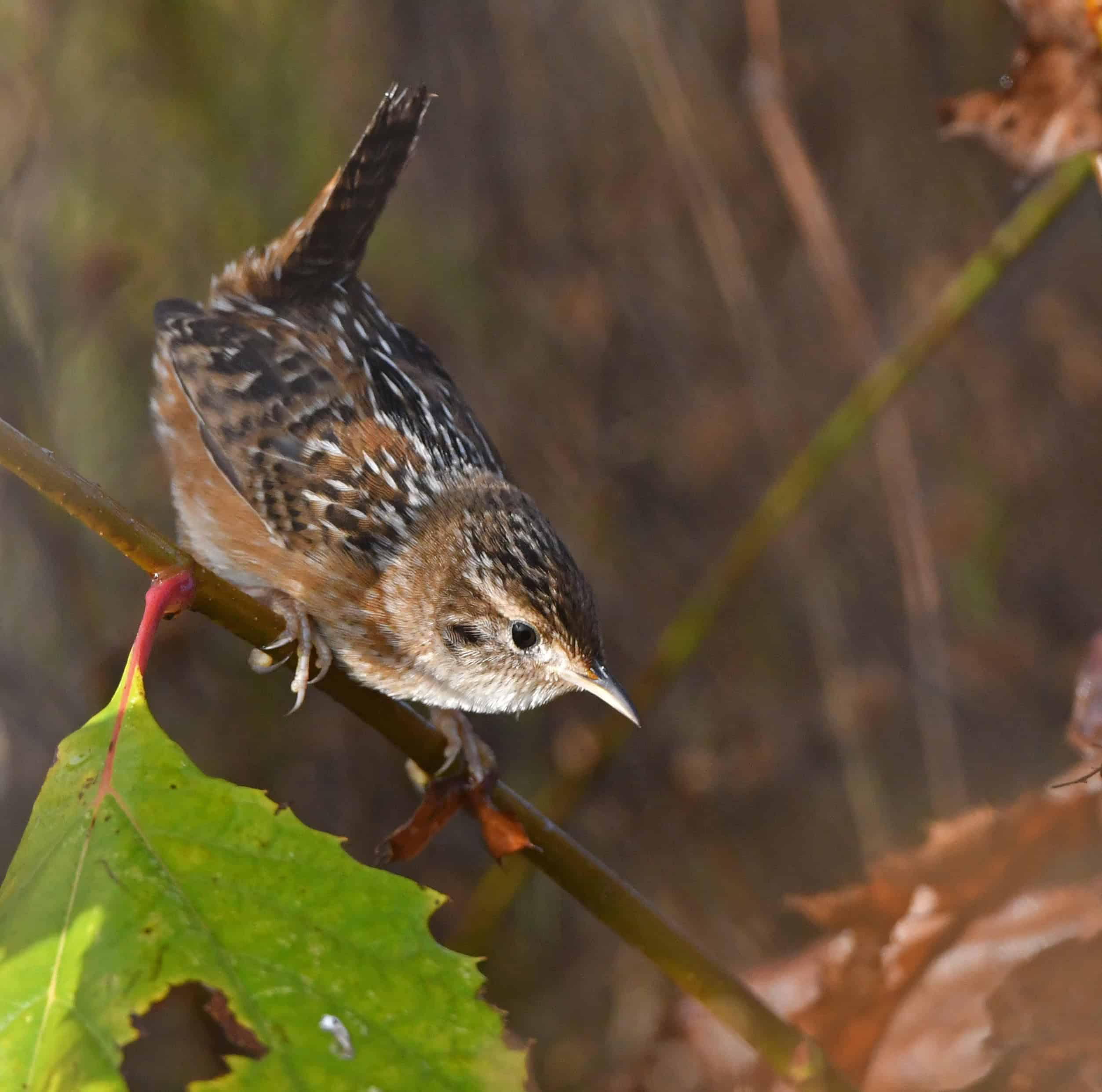Share this article
Beaver and trout in the 21st century ⏤ from The Wildlife Professional
Managing wide-ranging interests in Wisconsin pays off
The decision had been eagerly anticipated and a long time coming. For four years, a Wisconsin group had been crafting a plan to manage beaver, an animal that has long divided people in the state. The plan was finished, but it still needed approval from the seven people appointed by the governor to set policy for the Wisconsin Department of Natural Resources.
The Beaver Task Force had tried to strike a balance between the many differing, and often conflicting, views on how the valued beaver resource should be managed. Chaired by the state’s furbearer specialist and moderated by University of Wisconsin Extension, this group of about 40 people represented a wide range of interests and responsibilities, including state and federal wildlife and fisheries managers, tribes and citizen stakeholders. They met regularly, charged with a mission to use peer-reviewed science to develop an updated beaver management plan.
After rounds of public meetings and an online survey, the task force produced a 70-page document meant to replace an outdated 1990 plan and provide statewide direction on beaver management for 10 years.
In October 2015, the Natural Resources Board approved the 2015–2025 Wisconsin Beaver Management Plan, putting into effect its strong emphasis on striking a balance between competing views.
It should not be surprising that it took the task force four years to strike that balance. The North American beaver (Castor canadensis) is an iconic species that retains a prominent role in the public’s imagination and generates a wide spectrum of perspectives, with passionate beaver advocates at one end and staunch opponents at the other.
Most people, however, occupy a middle ground of fascination and respect for an animal that factored so prominently in the fur trade and European exploration of the continent and still provides a valuable resource for today’s fur trappers.
This middle ground is tempered by the problems beaver can cause when their activities conflict with human endeavors. Beavers can flood roads and bridges, damage commercial forests and negatively impact trout fisheries.
Recovering beaver populations
In the centuries since French coureurs de bois first traded brass kettles and glass beads with the Ottawa and Huron for beaver pelts, beaver-caused conflicts with humans occupy a fairly short span of time. Beaver experienced significant population reductions due to heavy exploitation during the fur trade era and the unregulated American market hunting that followed. With the development of a national conservation philosophy and strict regulatory protections beginning in the late 1800s— as well as active management to reestablish beaver populations —beaver numbers across the country began to rise.
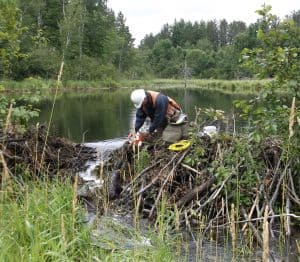
A Wildlife Services explosives specialist prepares explosives for beaver dam removal. ©Wisconsin Department of Natural Resources
The recovery, however, often came with an increase in beaver-human conflicts. Payne and Peterson (1986) determined that the increase in beaver complaints in north central Wisconsin from 1946 to 1983 was correlated with increases in human and beaver populations. Most complaints involved damage to roads, railroads and timber. Increases in New York state’s beaver populations in the 1980s was “accompanied by a rise in nuisance beaver complaints” (Siemer et al. 2004). Most respondents to a 1993 Wyoming survey felt that beaver were stable or increasing. Eighty-nine percent of those with beaver on their property reported damage problems, including blocked water control structures, girdled timber and flooded pasture, timber and crops (McKinstry and Anderson 1999).
Even though perspectives abound regarding best strategies for addressing negative beaver impacts to resources such as roads and timber, such conflicts are relatively clear cut. It’s more difficult to understand, as the Wisconsin task force spent many hours debating, the relationship between beaver activities and cold-water stream fisheries resources. Whether positive or negative, the impacts can be quite complex, and they often progress slowly and largely out of sight.
Historically, the discussion has been pretty basic, focused on whether beaver are good or bad, —“saints or sinners” — when it comes to a cold water ecosystem and the aquatic community it supports. Detractors complain of influences on water temperature and chemistry, increased streambed siltation and obstructions to upstream water retention during low flow conditions. Beaver supporters say fisheries may improve due to increased nutrient cycling, higher water quality and salmonids’ ability to grow larger (Collen and Gibson 2001).
Early concerns
In Wisconsin where relatively small, low-gradient streams support important brook trout (Salvelinus fontinalis) populations, the debate — at times more philosophical than scientific — is decades old and oftentimes has been more of a focal point than the actual impacts themselves. The origin of the idea that beaver activities may negatively influence cold-water ecosystems goes back to the turn of the century in northern Wisconsin. The massive logging of old-growth pine peaked in Wisconsin by 1880. Left in its wake were thousands of acres of “cutover” in northern and central parts of the state — slash-covered ground prone to devastating wildfires. In 1898, half of northern Wisconsin is estimated to have been burned over at least once (Knudsen 1963). With the advent of more effective fire control in the early 1900s, second-growth pioneer birch-aspen forest thrived, providing excellent beaver habitat at a time when beaver numbers were at a low. Also promoting beaver recovery were strict protections on beaver trapping. Between 1903 and 1933, 22 years were completely closed to beaver harvest and open years were greatly regulated (Knudsen 1963).
The concern over negative beaver impacts to trout streams came on the heels of the dramatic increase of beaver populations. By the time WDNR wildlife biologist George Knudsen reported in 1959 that beaver were “very common” across the northern third of the state, an increasing numbers of studies and reports had detailed damage to trout streams caused by burgeoning beaver numbers (Cook 1940, Sprules, 1940, Evans 1948, Patterson 1951, Bailey and Stearns 1951).
From the start is was recognized that “attempts to manage both trout and beaver in the same area and on the same streams invariably results in heated controversies between trout fisherman and the trapper with the game and fish manager caught in the middle.” (Evans 1948).
Elusive solutions
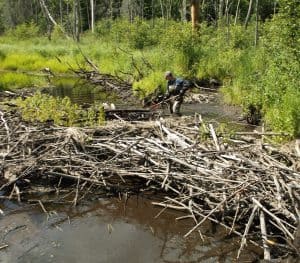
A Wildlife Services specialist begins to remove a beaver dam on a low-gradient trout stream in northern Wisconsin. ©Wisconsin Department of Natural Resources
With nearly 50 percent of Wisconsin’s 2,989 recognized trout streams — covering over 13,000 miles of stream — located in the northern third of the state (Mike Vogelsang, WDNR, personal communication), the early concern resulted in a succession of “beaver-trout” committees tasked with developing solutions. The first in 1950 recognized that stream-specific management was preferred to region-wide population reduction. It recommended more liberal trapping regulations on “classic” trout streams.
Knudsen recognized that a “general state-wide reduction would have to be severe to eliminate beaver from trout streams.” A 1950 proposal that never took flight described a multi-disciplinary approach where wildlife, fisheries and law enforcement staff managed a program of paid trappers focused on designated trout streams.
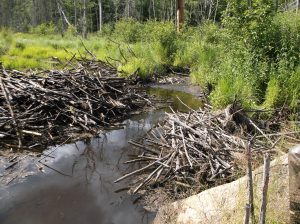
The stream flows again after a portion of the dam is removed. ©Wisconsin Department of Natural Resources
When early measures failed to attain desired results, recommendations from a 1959 committee resulted in a more integrated and aggressive program that included continued liberal seasons, as well as live trapping and dam removal by state employees. From 1960 to 1989, managers invoked a variety of strategies, including paying private fur trappers up to $25 per beaver to remove beaver and dams from trout streams, issuing nuisance beaver permits to landowners and a continued liberalizing of regulations. In 1980, bag limits were eliminated. In 1989, underwater snares were allowed.
Although the state’s wildlife and fisheries departments devoted a great deal of attention and resources to the problem, efforts in stemming beaver-trout conflicts proved inconsistent and ineffective. A WDNR Bureau of Fisheries evaluation of beaver control strategies from 1983 through the summer of 1987 concluded that beaver numbers continued to increase and any future beaver management funding should “be used to target beaver control in specific, high priority watersheds, using permanent personnel or watershed specific contracts (WDNR 1987).” The problem when it came to trout streams was that although liberal fur trapping seasons and cash incentives may have increased general beaver harvest, fur harvest — subject to the vagaries of fur prices and other factors — was not consistent or intense enough to effectively resolve stream level impacts.
By the late 1980s, a new beaver management strategy was needed.
A first in Wisconsin
A seven-member Beaver Project Team, including representatives from WDNR’s wildlife, fisheries, forestry and law enforcement departments, as well as the Great Lakes Indian Fish and Wildlife Commission, developed the new strategy. The 14-page 1990 Beaver Management Plan incorporated some of the strategies already in use, such as beaver subsidy payments and liberalization of regulations. But the plan also included some new ideas. It proposed a new harvest season framework based on zones that encouraged greater trapper harvest where beaver-trout stream conflicts were highest, while at the same time suggesting zones where beaver populations were promoted. The concept of “negative habitat management,” promoting conifers and hardwoods and discouraging the clearcutting of aspen-birch along trout stream corridors, was another new plan component.
The plan also recognized that “intensive effort” was required on designated streams to meet trout habitat restoration objectives. This idea was certainly not new. It was born from five decades of trial and error that revealed that mitigating beaver impacts on Wisconsin’s high-quality brook trout streams required focused and sustained effort.
As one component of this strategy, the U.S. Department of Agriculture’s Wildlife Services program was incorporated into the 1990 plan. With initial efforts directed towards high-quality trout streams on the Chequamegon-Nicolet National Forest and funded by the U.S. Forest Service in the late 1980s, Wildlife Services employed a strategy similar to what had been proposed back in 1950 — a work crew organized and managed specifically to address beaver impacts to designated cold-water systems.
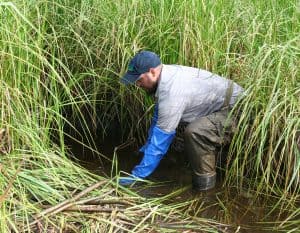
A Wildlife Services specialist sets trap to remove beaver in an important cold water tributary to Lake Superior. ©USDA Wildlife Services
The primary objective was to restore and maintain designated systems in free-flowing condition. Significantly, the measurements for success did not depend on numbers of beaver or dams removed, but rather the number of miles of stream restored. This would be accomplished through a well-defined protocol that actually involved more leg work at times than actual trapping or dam removal. A key component was the use of annual surveys of designated stream systems from the air, but perhaps more importantly, also on foot, to ensure that the streams remained free-flowing. This meant long days and many hours in the field slogging through swamps, searching for stream channels and studying maps to find access points.
The program targeted the most impacted streams first — those streams “stair-stepped” with dams, sometimes an incredible 50 to 60 dams per mile (Steve AveLallemant, personal communication). In these systems, dam removal often revealed older dams that had been flooded by newer dams, and the work to clear a stream of dams often took two or three years. After targeted beaver and dam removal, restoration of trout habitat was up to Mother Nature and depended largely on stream gradient.
Once a stream system was opened up, a critical step — the lack of which had stymied restoration efforts in the past — was the ongoing maintenance effort necessary to ensure habitat recovery and stability across an entire stream system. Locating, trapping and removing beaver certainly served as a critical component to the strategy. The program, however, was not a fur harvest or population management effort. Rather, it was a complex and focused wildlife conflict management and habitat restoration project.
Currently, the Wildlife Services program maintains about 1,700 miles of cold-water stream systems, primarily in northern Wisconsin, representing about 13 percent of the trout streams in the state. These streams are recognized to be some of the best trout waters in northern Wisconsin. Most of the streams worked today by Wildlife Services, which only manages the streams between April and October to avoid impeding recreational trapping, have long been in a maintenance phase and exhibit greatly improved habitat and numbers of fish.
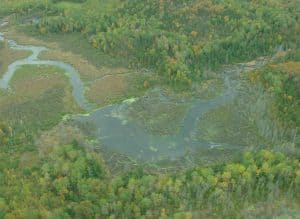
The influence of beaver dams on trout stream channels is apparent from the air. ©USDA Wildlife Services
WDNR fisheries biologists based in the north have observed dramatic results from the agency’s stream-specific beaver management. Max Wolter, a fisheries biologist based in Hayward, Wis., compared stream survey data from nine streams worked by Wildlife Services to nine similar streams in the same area not targeted. On the managed streams, trout recruitment or average young of the year per mile, was 20 times higher and abundance of adult trout measured per mile was seven times higher compared to beaver-impacted streams (Max Wolter, WDNR, personal communication). In real numbers, this was an average of 649 hatchlings per mile on the managed streams compared to only 30 in unmanaged streams, and 460 adult trout per mile compared to 70 per mile on beaver-impacted streams.
Due to the powerful combination of cost-effectiveness and on-the-ground success in improving trout habitat, many WDNR fisheries biologists have indicated that if funding allowed for only one type of stream habitat improvement work in northern Wisconsin they would choose beaver management (Mike Vogelsang, WDNR, personal communication).
Challenges for the future
While the 1990 beaver management plan broke new ground and successfully addressed many of the beaver management concerns at the time, by the early 2000s it was time for a critical reassessment. Some user groups felt the 1990 plan had accomplished its goals, but at the same time, there was a recognition that the northern Wisconsin landscape had changed significantly over the 10-year period.
The Wisconsin Beaver Task Force formed in 2011 to develop a new plan, but it faced many of the same questions and problems — as well as contentious debate — that had been around for over a half-century. The context of beaver management discussions in the 21st century was much different than in previous eras, though.
The greater diversity of groups at the table — about 40 individuals representing 20 entities — and the amount of time spent — years rather than months — in the development of the 2015 Wisconsin Beaver Management Plan, along with a strong focus on science-based decision making, attests to the idea that beaver management today requires a complex, multifaceted and interdisciplinary approach with strong input from the public.
By taking the time necessary to respect all perspectives and striving to make good science-based decisions, the task force showed that Wisconsin can continue to attain an acceptable balance of objectives in managing this controversial species.
Editor’s note: To see the Wisconsin Beaver Management Plan 2015-2025 got to the Wisconsin Department of Natural Resources website and use the search function.
 Robert C. Willging, MS, CWB, is district supervisor for the USDA Wildlife Services program in northern Wisconsin.
Robert C. Willging, MS, CWB, is district supervisor for the USDA Wildlife Services program in northern Wisconsin.
Header Image: Beloved by some and despised by others, beavers are the subject of a recent management plan in Wisconsin that seeks to balance a wide range of interests. ©Richard Nowitz, USDA







